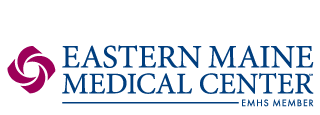Tritanium® Primary Acetabular Shell Study
| Status: | Active, not recruiting |
|---|---|
| Conditions: | Arthritis, Osteoarthritis (OA), Orthopedic |
| Therapuetic Areas: | Rheumatology, Orthopedics / Podiatry |
| Healthy: | No |
| Age Range: | 18 - Any |
| Updated: | 12/23/2018 |
| Start Date: | July 2011 |
| End Date: | November 2026 |
A Prospective, Post-market, Multi-center Study of the Tritanium® Acetabular Shell
This study will be a prospective, non-randomized evaluation of the Tritanium® Acetabular
Shell for primary total hip replacement (THR) with a cementless application in a consecutive
series of patients who meet the eligibility criteria. Half of the cases will use the X3®
polyethylene insert alone as the bearing surface; the other half will use the MDMTM liner
coupled with a compatible ADM/MDMTM X3® insert as the bearing surface.
The success rate, defined as freedom from acetabular revision for any reason, for hips
implanted with the Tritanium® Acetabular Shell, is no worse than for hips implanted with
similar technology as reported in the literature and Trident® X3® Study historical control at
5 years postoperative.
Shell for primary total hip replacement (THR) with a cementless application in a consecutive
series of patients who meet the eligibility criteria. Half of the cases will use the X3®
polyethylene insert alone as the bearing surface; the other half will use the MDMTM liner
coupled with a compatible ADM/MDMTM X3® insert as the bearing surface.
The success rate, defined as freedom from acetabular revision for any reason, for hips
implanted with the Tritanium® Acetabular Shell, is no worse than for hips implanted with
similar technology as reported in the literature and Trident® X3® Study historical control at
5 years postoperative.
The Tritanium® Acetabular Shell, cleared for use under FDA 510(k) K081171, is a hemispherical
acetabular shell with a 3D surface for biological fixation, fabricated from CP Ti. The shell
is built upon the design features and clinical history of the existing Trident® Tritanium®,
Trident® AD, and Trident® HA hemispherical acetabular shells. The device is designed with a
roughened surface and high coefficient of friction to resist micromotion and promote initial
fixation. The Tritanium® Acetabular Shell, intended for use in a cementless application, is
available in sizes from 44 mm through 66 mm and is compatible with Trident® polyethylene
liners and acetabular screws. This advanced technology is designed to address the need for
improved initial and biological fixation. Data in support of these marketing claims will be
collected in the Tritanium® Primary Acetabular Shell Study.
prospective, post-market, multi-center design will be employed. Radiographs will be assessed
by an independent reviewer.
Cases will be enrolled at 7 to 12 centers. The enrollment goal ranges from 20 to 34 cases
implanted with the Tritanium® Acetabular Shell per center. The enrollment goal range is
dependent upon the number of participating centers as well as the relative rates of
enrollment of the two treatment groups. Although a range is presented, there is no maximum
limit to the number of cases that a center may enroll. In the event that a center far exceeds
the overall enrollment goal or enrollment into one of the treatment groups is completed,
Stryker may ask the center to cease enrollment so as not to skew the data. All participating
centers will comply with the federal regulations regarding patient informed consent and IRB
approval. Non-compliance of a study center may result in termination of the center's
participation in the study.
acetabular shell with a 3D surface for biological fixation, fabricated from CP Ti. The shell
is built upon the design features and clinical history of the existing Trident® Tritanium®,
Trident® AD, and Trident® HA hemispherical acetabular shells. The device is designed with a
roughened surface and high coefficient of friction to resist micromotion and promote initial
fixation. The Tritanium® Acetabular Shell, intended for use in a cementless application, is
available in sizes from 44 mm through 66 mm and is compatible with Trident® polyethylene
liners and acetabular screws. This advanced technology is designed to address the need for
improved initial and biological fixation. Data in support of these marketing claims will be
collected in the Tritanium® Primary Acetabular Shell Study.
prospective, post-market, multi-center design will be employed. Radiographs will be assessed
by an independent reviewer.
Cases will be enrolled at 7 to 12 centers. The enrollment goal ranges from 20 to 34 cases
implanted with the Tritanium® Acetabular Shell per center. The enrollment goal range is
dependent upon the number of participating centers as well as the relative rates of
enrollment of the two treatment groups. Although a range is presented, there is no maximum
limit to the number of cases that a center may enroll. In the event that a center far exceeds
the overall enrollment goal or enrollment into one of the treatment groups is completed,
Stryker may ask the center to cease enrollment so as not to skew the data. All participating
centers will comply with the federal regulations regarding patient informed consent and IRB
approval. Non-compliance of a study center may result in termination of the center's
participation in the study.
Inclusion Criteria:
- A. Patient has signed an IRB approved, study specific Informed Patient Consent Form.
- B. Patient is a male or non-pregnant female age 18 years or older at time of study
device implantation.
- C. Patient has primary diagnosis of Non-Inflammatory Degenerative Joint Disease
(NIDJD).
- D. Patient is a candidate for a primary cementless total hip replacement.
- E. Patient is willing and able to comply with postoperative scheduled clinical and
radiographic evaluations and rehabilitation.
Exclusion Criteria:
- F. Patient has a Body Mass Index (BMI) ≥ 40.
- G. Patient has an active or suspected latent infection in or about the affected hip
joint at time of study device implantation.
- H. Patient has a neuromuscular or neurosensory deficiency, which limits the ability to
evaluate the safety and efficacy of the device.
- I. Patient is diagnosed with a systemic disease (e.g. Lupus Erythematosus) or a
metabolic disorder (e.g. Paget's Disease) leading to progressive bone deterioration.
- J. Patient is immunologically suppressed or receiving steroids in excess of normal
physiological requirements (e.g. > 30 days).
- K. Patient requires revision surgery of a previously implanted total hip replacement
or hip fusion to the affected joint.
- L. Patient has a known sensitivity to device materials.
- M. Patient is a prisoner.
We found this trial at
9
sites
Morgantown, West Virginia 26506
(304) 293-0111

Principal Investigator: Brock Lindsey, MD
Phone: 304-285-7445
West Virginia University West Virginia University, founded in 1867, has a long and rich history...
Click here to add this to my saved trials
Eastern Maine Medical Center Located in Bangor, Eastern Maine Medical Center (EMMC) serves communities throughout...
Click here to add this to my saved trials
Chapel Hill, North Carolina 27599
(919) 962-2211

Principal Investigator: Dan Del Gaizo, MD
Phone: 919-966-5495
Univ of North Carolina Carolina’s vibrant people and programs attest to the University’s long-standing place...
Click here to add this to my saved trials
Click here to add this to my saved trials
Lexington, Kentucky 40536
Principal Investigator: Stephen Duncan, MD
Phone: 859-217-6740
Click here to add this to my saved trials
Click here to add this to my saved trials
Click here to add this to my saved trials
Click here to add this to my saved trials
Tampa, Florida 33542
Principal Investigator: Stephen Raterman, MD
Phone: 813-780-1555
Click here to add this to my saved trials
